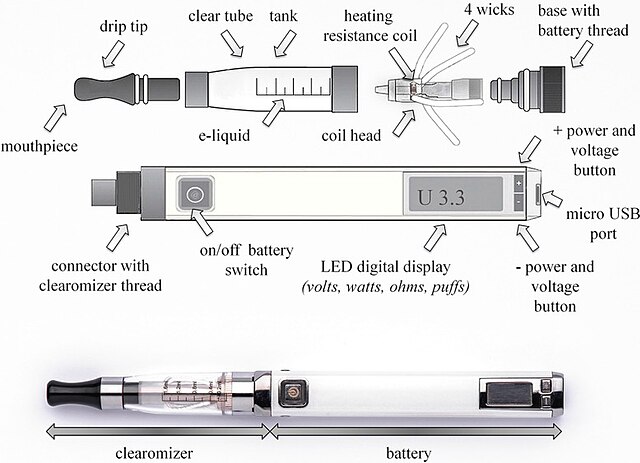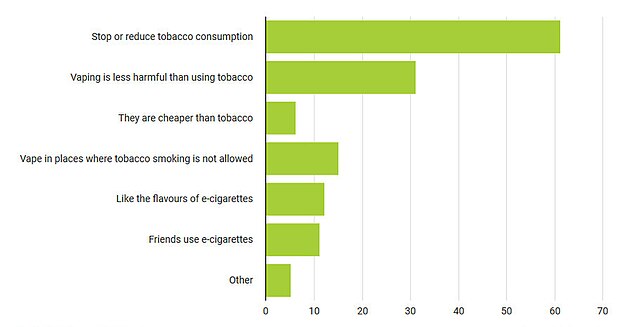Regulation of electronic cigarettes
Regulation of electronic cigarettes varies across countries and states, ranging from no regulation to banning them entirely. As of 2015, around two thirds of major nations have regulated e-cigarettes in some way. A 2023 report by the World Health Organization (WHO) found that 34 countries had banned the sale of e-cigarettes.
A no smoking or vaping sign from the US
An electronic cigarette (e-cigarette) or vape is a device that simulates tobacco smoking. It consists of an atomizer, a power source such as a battery, and a container such as a cartridge or tank. Instead of smoke, the user inhales vapor. As such, using an e-cigarette is often called "vaping". The atomizer is a heating element that vaporizes a liquid solution called e-liquid, which quickly cools into an aerosol of tiny droplets, vapor and air. The vapor mainly comprises propylene glycol and/or glycerin, usually with nicotine and flavoring. Its exact composition varies, and depends on several things including user behavior.
A first-generation e-cigarette that resembles a tobacco cigarette, with a battery portion that can be disconnected and recharged using the USB power charger
An exploded view of an e-cigarette with transparent clearomizer and changeable dual-coil head. This model allows for a wide range of settings.
Reasons for initiating e-cigarette use in the European Union, in a 2018 Eurobarometer poll
The Ruyan e-cigar was first launched in China in 2004.





